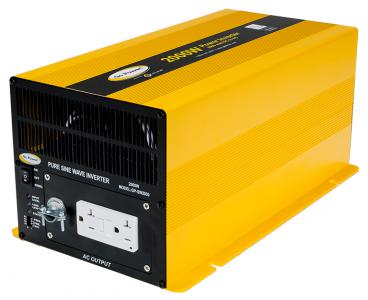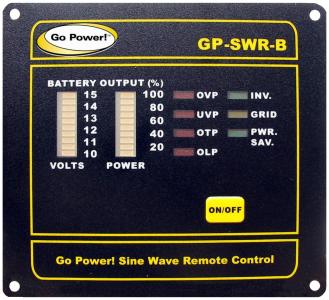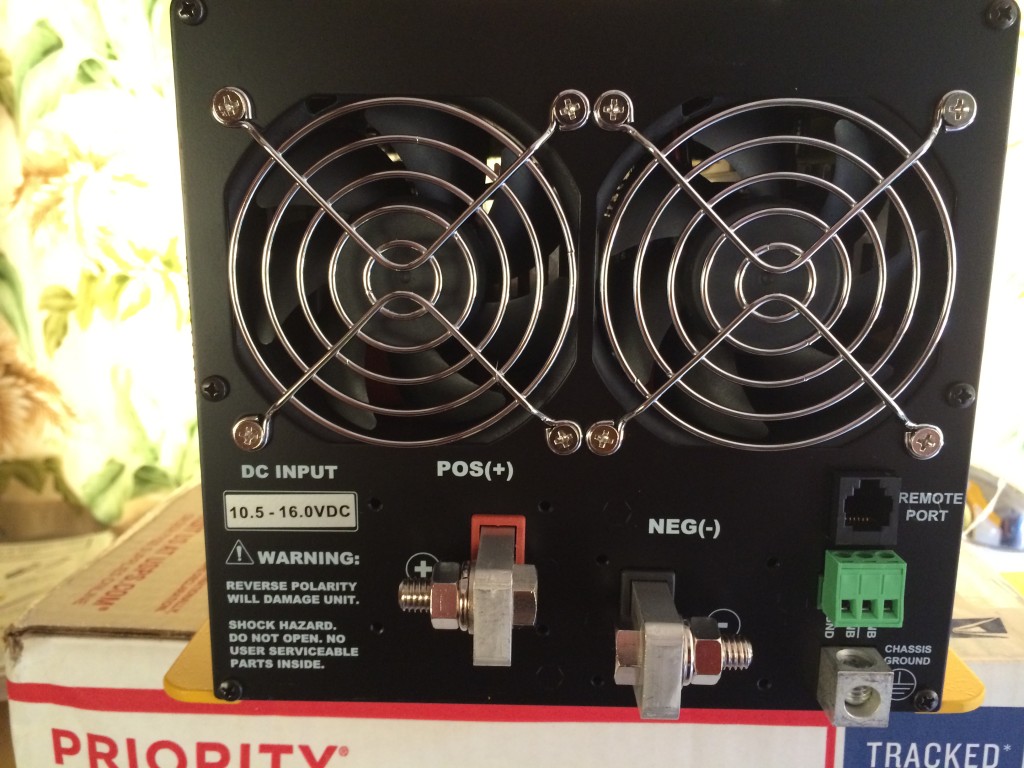As I mentioned in the first installment, I wanted to upgrade my inverter to a pure sine model capable of running my microwave.
Microwave’s are tricky because the number of watts is marketed heavily. My 900w convection microwave is pretty typical for RV use. Mainly because it is the smallest model you can get that can be built-in to a cabinet. Low power is desirable for an RV because of the sometimes questionable power available at the pedestal when you’re hooked up. 30amp service isn’t always the same.
The tricky part of the microwave is that the 900w rating is what it’s cooking power is, not the AC power requirement is takes to generate that. Pay special attention to your specific appliances to make sure you pick the right inverter. It turns out that my 900w microwave draws 1450 watts of AC power!
This is an important point. If you buy a 1000 watt inverter thinking it will power your 900w microwave, you’ll be in for a sad awakening. You may also think, “well, I’ll just run my microwave at half power so it will work with my inverter.” Not so fast there. It turns out that microwaves merely change their duty cycle to run at anything less than full power. In other words, they run at full power, cycle off for a time, then run full power again. The result is you still need an inverter capable of powering the full load of the microwave.
Another consideration is you should never run electronics consistently at 100% of their capacity. My choice of a 1500w inverter to supply the 1450 watts of input power I need for my microwave would be a poor decision. This is why I went with the 2000w pure sine inverter from GoPower.
The GP-SW2000W Inverter has a continuous duty of 2000 watts. It features a GFI protected outlet, hardwire output, and an optional remote panel. The remote panel is handy because you usually mount the inverter out of the way near the batteries.
There are dip switch settings on the inverter that allow you to switch between 60hz (US) and 50hz operation. The remaining switches adjust a power-save mode.
Power-save mode helps to lower the standby current of the inverter when its turned on, but not in use. Typical on power draws about 2.6 amps and the power-save can lower it to around .3 amps. The power-save mode can be confusing. The power draw needs to be a certain, programmed amount before the inverter turns the full power on. Make sure you understand this completely before using the feature. My suggestion is to disable it and just turn the inverter on when you know you need it.
Check the specifications of the inverter you intend to buy. One key spec is the lower operating voltage. When running high current loads, the battery voltage will tend to drop. This is normal, even for fully-charged batteries. If the low voltage cut-off is too high, you will have a problem. Typical low cutoff voltage for RV use is 10.5 volts. Of course your battery is completely dead if it reads that under no load, but as I said, it’s normal for voltage to drop during high current situations. So a higher cutoff voltage will sound unnecessary alarms or shut down your inverter.
GoPower made a line of “Fleet” inverters with a higher cut off voltage of 11.5v. This was a special request of a fleet owner to help keep his crew from running their batteries down. These should not make their way to the general public.
Every effort is made to keep these from the general public. I just wanted to make you aware in case you wind up with one, or someone tries to sell you a used one.
Here is the proper model for RV use.
The last installment will talk about the installation into my 1960 Airstream Ambassador.
Amazon link for the GP-SW2000-12 Inverter
Amazon link for the GP-SWR-B12 Remote






